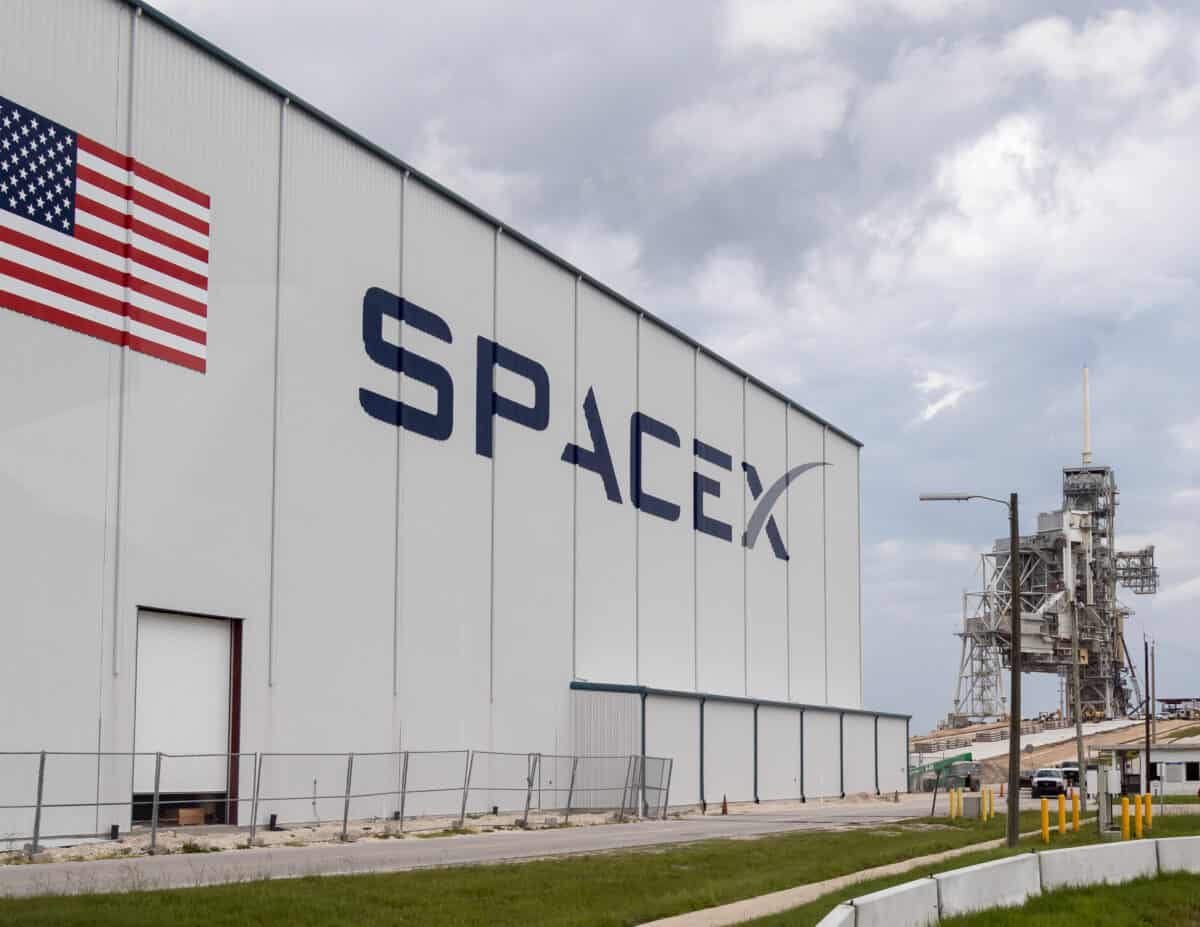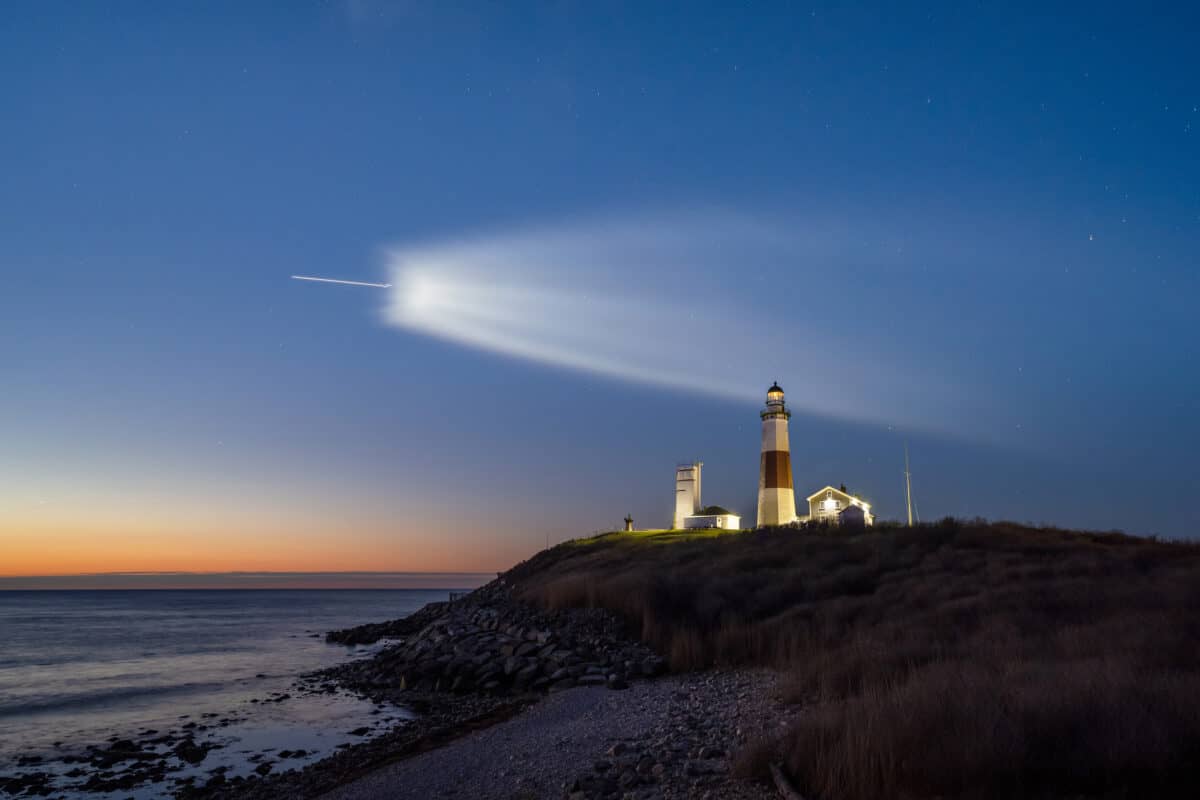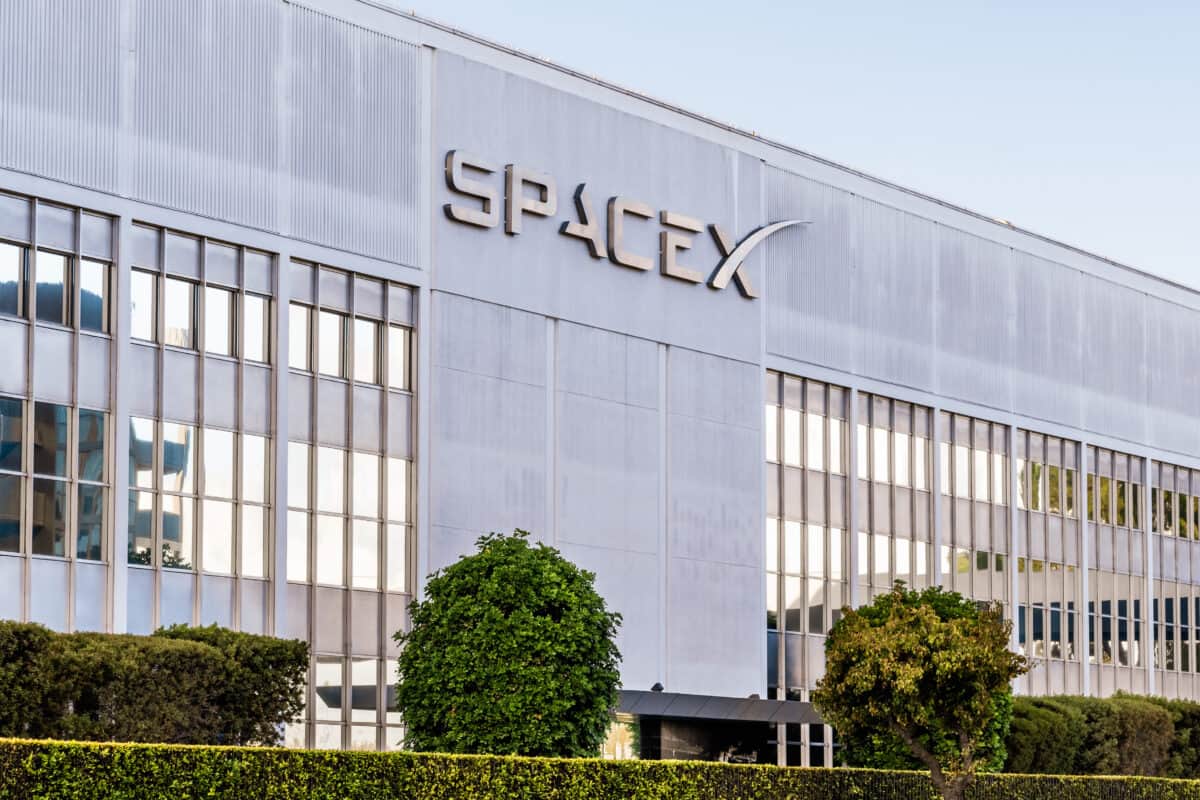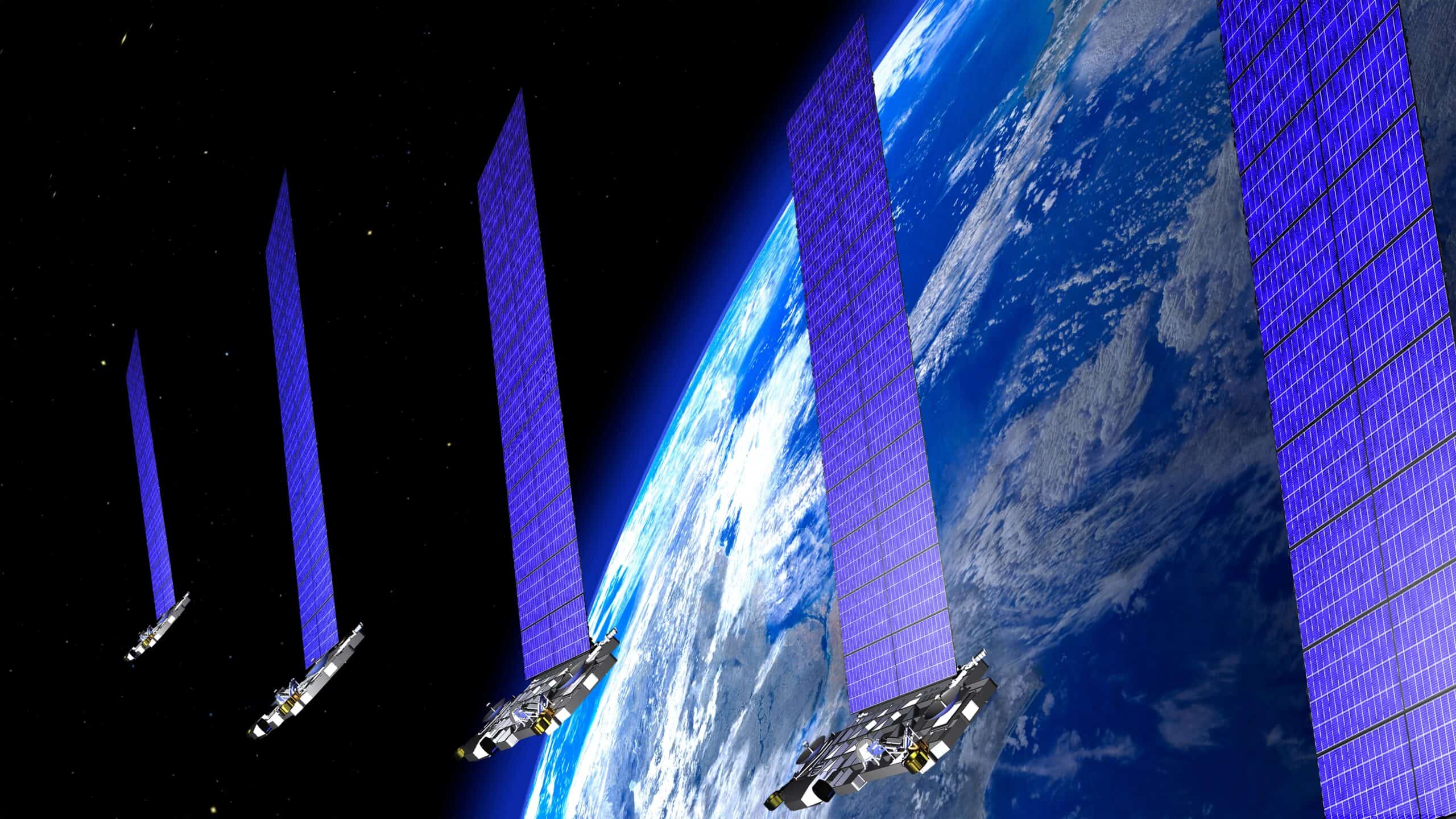The current number of satellites in Musk’s Starlink constellation is certainly a moving target. With five Falcon9 launches in July 2022 alone, and an equal number slated for August, the total “small” (less than 1200 kg/2600 lb.) satellites in orbit is an ever-growing figure.
In this article, we will take a look at what’s going on currently, launch schedules, and the number of satellites per launch, to get an idea of where the total is heading and the impact it could have.
Quick Facts
Determining the Number of Satellites in Musk’s Starlink
After ramping things up in 2021, Musk’s Starlink satellite number is increasing at a steady pace and is on track to hit the 12,000 mark by the 2026 goal. Tintin A and Tintin B test satellites are not included in these numbers.
To get an accurate picture of what’s going on with the number of Starlink satellites, let’s break it down into 3 separate numbers:
1.) Total Number of Satellites Launched
As of August 15, 2022, Musk’s Starlink program has launched a total of 3,055 small LEO (Low Earth Orbit) satellites. The LEO satellites are the key to the success of Musk’s plan to cover the entire globe and make satellite internet faster and more affordable for everyone on planet Earth.
Note: During the process of writing this article, I had the awesome experience of watching the most recent launch of Starlink satellites from Cape Canaveral, FL in real time. It carried an additional 53 satellites into orbit and brought the total to 2,846 as we speak.
It’s easy to see why the number is a moving target. The reentry and safe landing of the stage one rocket on a drone ship in the Pacific Ocean was also an amazing sight. If you get the chance to watch one of the Falcon 9 launches, it is certainly worth taking the time to do so.
2.) Total Number of Satellites Still in Orbit

SpaceX delivers internet services t people around the world with their low earth orbit satellites.
As of this same date, there are 2,793 of the 3,055 satellites still in orbit. A large number of satellites from the Starlink Group 4-7 were lost to a geomagnetic storm. New groups of satellites will also need to be launched to replace older units that are outdated or damaged by orbital decay. SpaceX is constantly working on improving the technology to reduce the effect of orbital decay and extend the lifespan of the Starlink satellites.
3.) Number of Satellites Per Launch
The average number per launch over the last fifteen missions has been 51.53, just below the current maximum of 53 satellites per launch. Using those figures, the increase per month would be approx. 258 additional satellites in orbit. This schedule will bring the total to nearly 4,000 Starlink satellites in orbit by the end of 2022.
All of the satellites launched in 2022 have been v1.5 version satellites, equipped with inter-satellite laser communication, and an approximate weight of 650 lb. (295 kg). SpaceX also has another type of launch rocket under development called “Starship”, which will have a much larger payload, making it possible to send more satellites into orbit per launch.

Future Launches Adding Satellites to Starlink
When taking the above numbers into consideration, it’s easy to see that if you turn away for a short time, the relentless Musk will have your figures outdated for you fast. At the moment, there are three more launches scheduled in August, and two early in September on the 4th and the 7th. Based on Starlink’s launch history, they don’t miss many months, so you can extrapolate that number out for years to come and estimate the total.
How Many Total Satellites Does Musk’s Starlink Have Planned?
With permission for 12,000 from the U.S. Federal Telecommunications Commission (FCC) and the International Telecommunications Union (ITU) and a possible extension to 42,000, there doesn’t seem to be any sign of slowing in the near future, which is not surprising based on Musk’s reputation.
It’s safe to say, the goal of having the approved satellites in orbit by 2026 is a done deal. What happens beyond that is difficult to predict, with regulatory hurdles and concerns from the scientific community Starlink will face.
SpaceX is continually addressing issues that concern scientists and regulatory agencies, with the most recent being the brightness of the satellites in the night sky. Musk tweeted, “Solar panel angle during raise/park. We’re fixing it now.”
What Happens When the Satellite Constellation is Complete?
Calculations show that once Starlink has the required number of satellites in orbit, they will need to continue to launch almost every week to replace the unusable satellites.
This launch number is based on Falcon9 launches and could certainly change with the improvement in launch capabilities that are expected.
A satellite constellation is a group of synthetic or artificial satellites that work together as a system. A single satellite or a constellation can provide a permanent global or at least near-global coverage of power. However, that would mean that at any time or anywhere on Earth, you could look up at the sky and see a satellite.
How Does LEO Compare to GEO?
The key to understanding why Musk’s Starlink project requires such a large number of satellites comes down to the type of orbit that they are in. Starlink is employing LEO satellites to achieve its goals of global coverage, low latency, and a reasonable cost.
These LEO satellites have an orbital time of 128 minutes, meaning they don’t cover a stationary area of the globe. As opposed to a GEO (Geosynchronous Earth Orbit) with an orbital time of 24 hours, the same as the Earth. This gives GEO satellites a stationary position of the Earth to cover.
The high speeds, lower altitudes, and constellation features of the LEO satellites give them the ability to cover the entire globe and reduce latency, and because they are massed produced, come in at a much lower price tag. As SpaceX continues to improve its technology and become more and more efficient, it’s looking like those costs will be reduced even further.
How Many Competitive Systems is Starlink Facing?
There are two current satellite internet providers in the game, Hughes Network Systems and Viasat, Inc, which are fixed systems that won’t be capable of providing the global coverage that Starlink is aiming for any time soon.
Other planned systems include Kuiper Systems, a subsidiary of Amazon, a Low Earth Orbit constellation that has the potential to compete with Musk, and the OneWeb constellation that has already launched its own satellites.
One other system of interest is the O3b project, that is employing Medium Earth Orbit (MEO) satellites that will cover only the equatorial area of the Earth.
It seems we have another exciting space race unfolding in our modern times, this time focused more on the huge profits of the communications sector than the military advantages of the past. There have been military cooperation with Musk’s Starlink system and only time will tell what uses will present themselves once the constellation is complete.

The Potential Impact of Musk’s Starlink on the World
The latest available statistics show that about one-third of the global population does not have access to the internet. A bold move like Starlink, and its success, could mean new access to tech, education, and information that could improve the standard of living for billions of people worldwide.
On the downside, astronomers feel that a number of satellites in Musk’s Starlink constellation could block their view of near-Earth objects that could be very dangerous to our planet.

SpaceX is a US aerospace company that designs, manufactures and launches advanced rockets like Falcon Heavy Rocket and spacecraft.
As mentioned in the Tweet, the Starlink program is working on reducing the amount of light the satellites put off, mitigating the impact the satellites have on the night sky. But there are still many who are worried that this high number of additional satellites in an already busy orbital environment is troublesome.
Summing It All Up
So, what are the takeaways from all this information on the satellites that Musk plans for the Starlink constellation?
I suppose it depends on which position you hold in the lineup of benefactors, critics, and skeptics. The benefactors obviously being Musk, SpaceX, and all the people around the world that will gain access to the information that a lot of us take for granted, all the while sending billions of dollars to Musk’s company. (At least that’s the plan!)
Its detractors – the astronomers, scientists, and naysayers that don’t believe that type of LEO constellation will lead to better ends for the planet, or the future of space travel, make some valid points of their own.
One thing that can’t be denied, is this endeavor by Musk and SpaceX is a testament to the ingenuity, vision, and sheer boldness of the human mind and spirit. For those of us who find it inspirational and exciting, this type of grand plan might just be worth taking some risks.
Next Up…
- Elon Musk Discusses Why He Moved From California To Texas – Learn why Elon Musk moved!
- Watch Elon Discuss Space-based Internet With Pickup Truck Sized Satellites – Learn about Elon’s satellites now!
- Elon Talks About His House Parties, Post Malone, and Police Being Called – Learn about Elon’s house parties now!
Want to Retire Early? Start Here (Sponsor)
Want retirement to come a few years earlier than you’d planned? Or are you ready to retire now, but want an extra set of eyes on your finances?
Now you can speak with up to 3 financial experts in your area for FREE. By simply clicking here you can begin to match with financial professionals who can help you build your plan to retire early. And the best part? The first conversation with them is free.
Click here to match with up to 3 financial pros who would be excited to help you make financial decisions.
The image featured at the top of this post is ©Jacques Dayan/Shutterstock.com.
